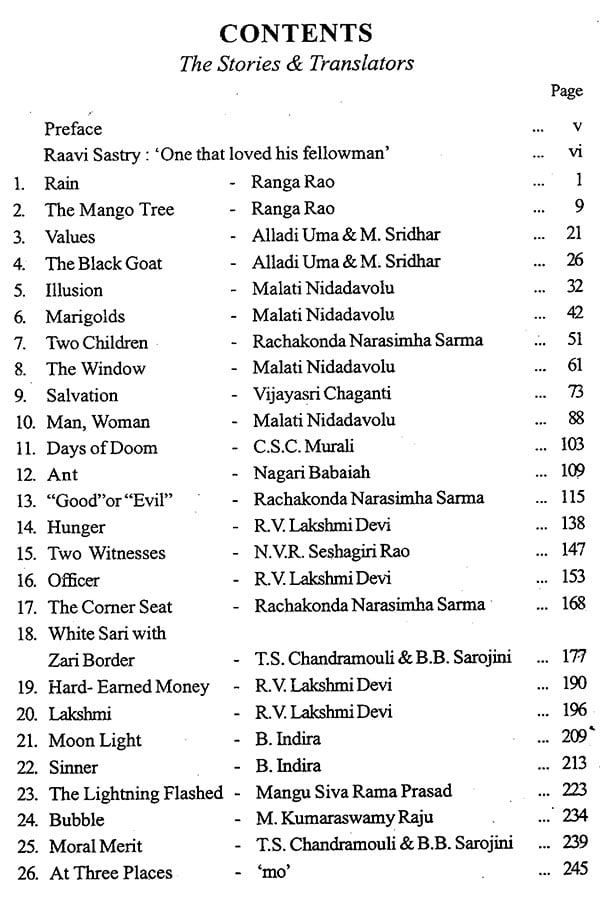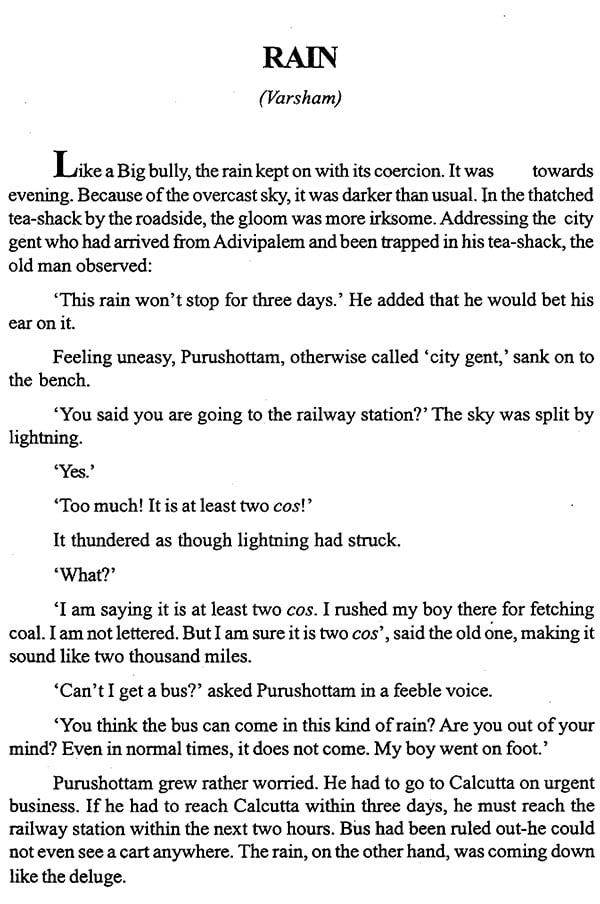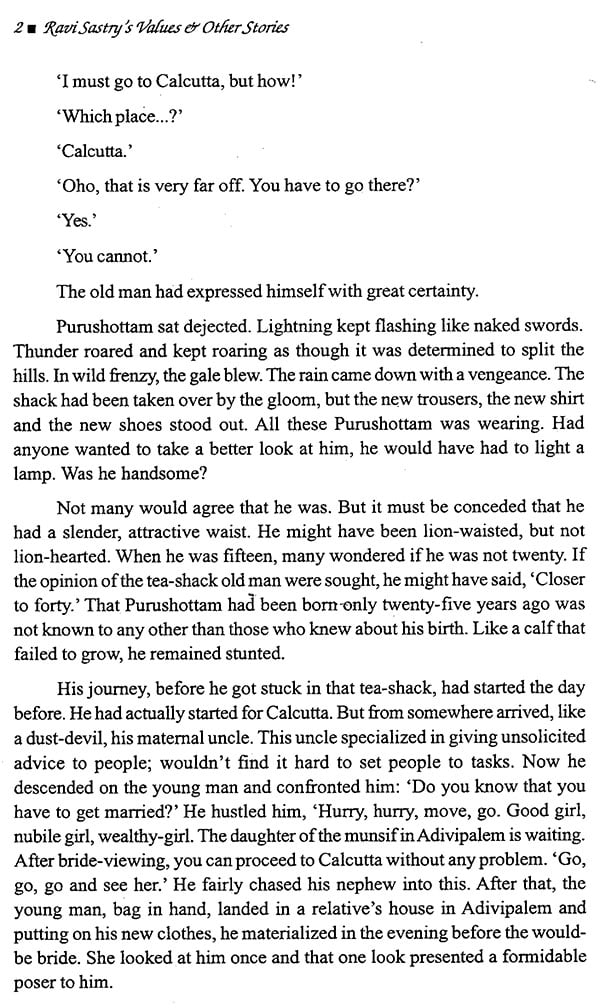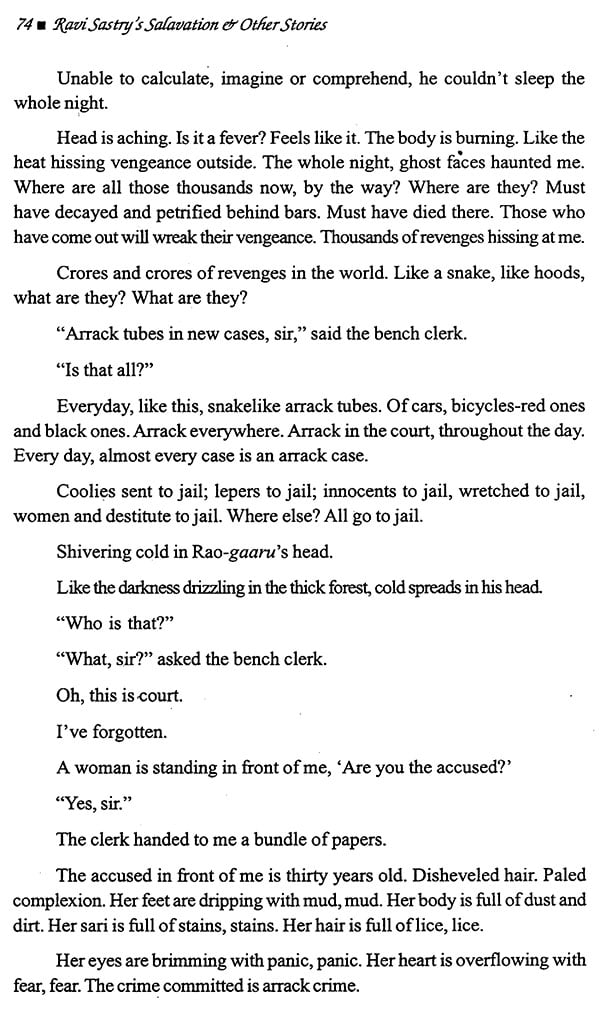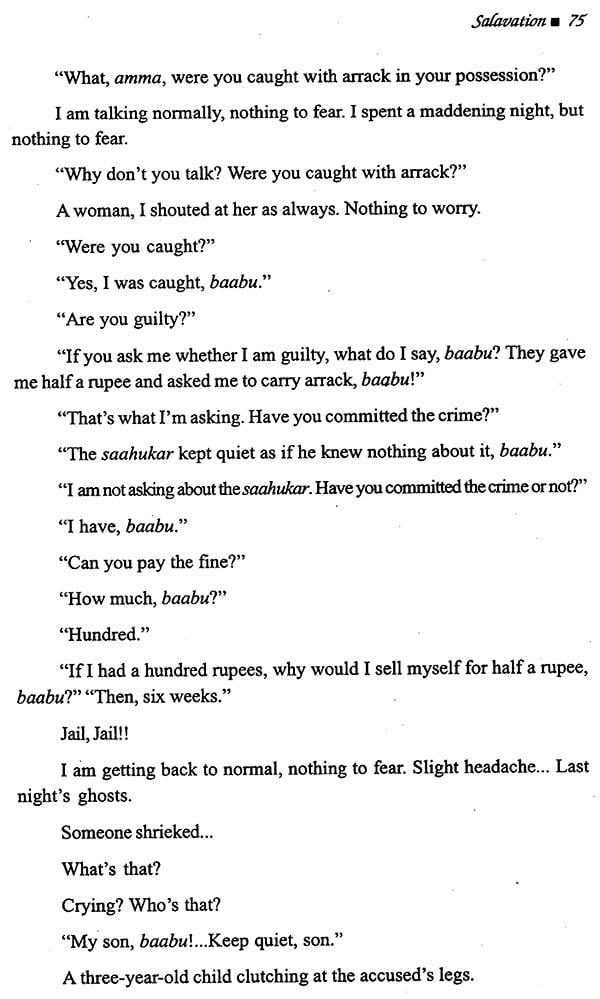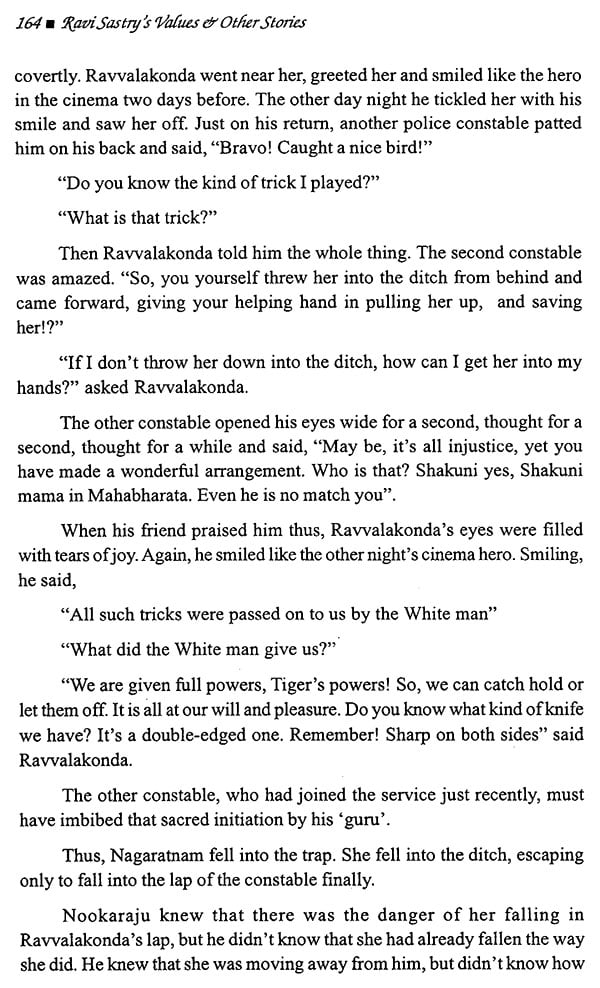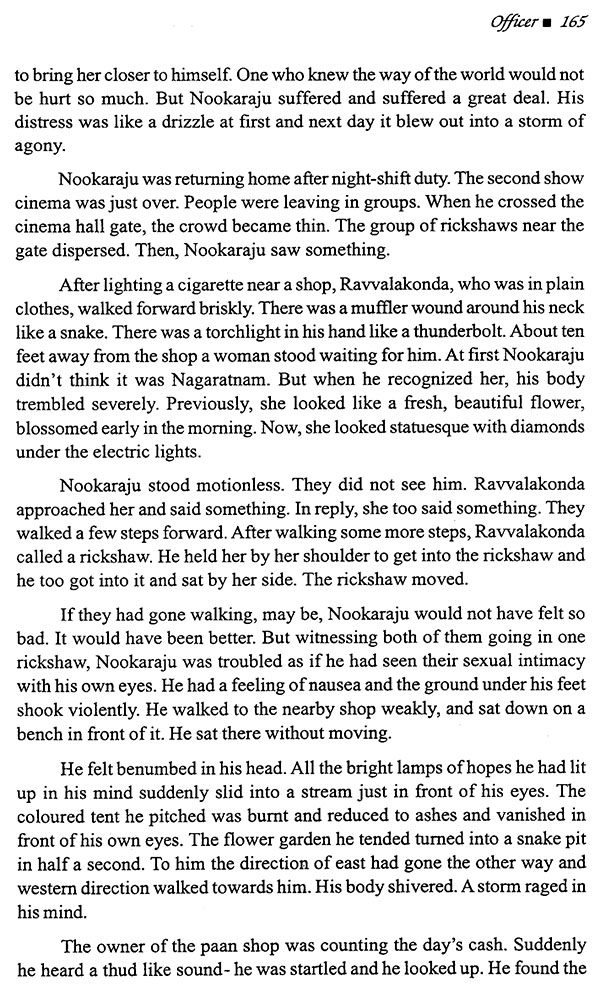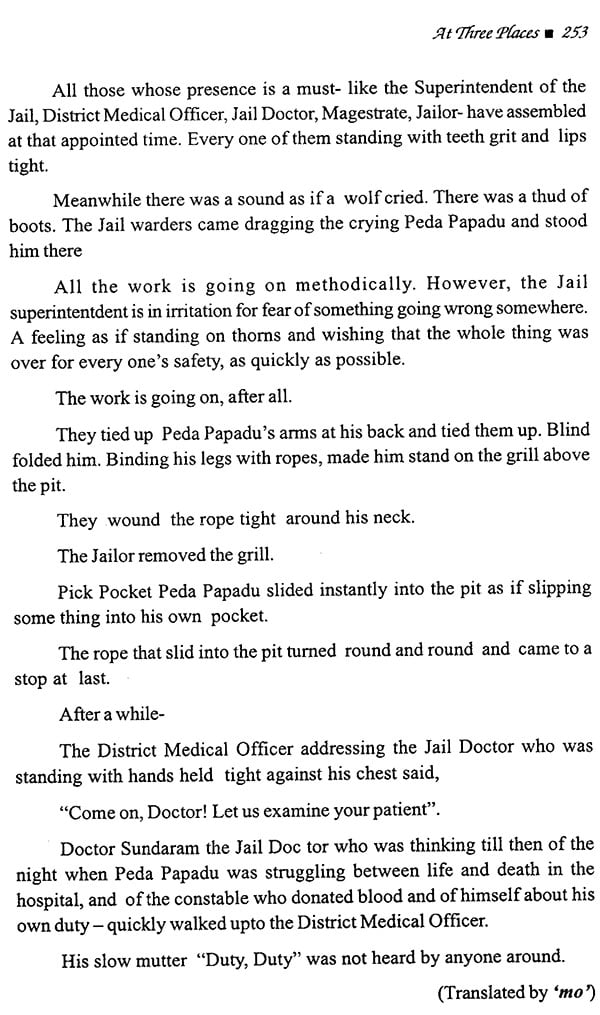
Rachakonda Viswanatha Sastry's Value & Other Stories (In Translation from Telugu)
Book Specification
| Item Code: | NAX091 |
| Author: | V. Mohan Prasad, Director, Anusrjana |
| Publisher: | Dravidian University Campus |
| Language: | English |
| Edition: | 2007 |
| Pages: | 256 |
| Cover: | PAPERBACK |
| Other Details | 9.00 X 6.00 inch |
| Weight | 320 gm |
Book Description
That the foundations of Indian culture were deeply embedded in Dravidian culture is now an incontrovertible fact. Dravidian culture is one of the most ancient cultures of the world. Those cultures, slightly contemporaneous to one another, slowly started fading out. However, the primordial Dravidian culture continues to thrive without losing its quintessence despite the apparent changes in systems of dress and address.
Dravidian University is established through a Legislature Act by the Government of Andhra Pradesh in 1997 with the extended support of Southern States, at Kuppam, a tri-lingual junction in the south western part of Andhra Pradesh, 4 km. away from Karantaka, 8 km. from Tamil Nadu and about 4 hours drive from Kerala, to promote a spirit of integration among the speakers of Dravidian languages, thus building a strong path of National Integration and advancing research and studies in Dravidian languages which are about 27 both inside India and outside like Beluchistan and creating a strong awareness of the integrated character of Dravidian Studies, a major branch of Indology.
Besides the research programmes, the University serves the community with several modern, employable and innovative courses of study. .
Integration at all levels is the motto of Dravidian University.
Innovation is its force and strength.
Prasaraanga (Publications wing) and Anusrijana (Translation Bureau) are the two most significant wings of the University from out of its several on going progressive activities.
Rachakonda Viswanatha Sastry (1922-93) ‘Ravisastry’ for short, is a household name in the world of Telugu fiction writing. A prolific writer of short stories, novels and plays he stands supreme as a realist, socially concerned and committed to creativity. Once he famously proclamed that every writer worth his name should think twice before he writes whether his writing harms the good or helps the bad. He saw to it that whatever he wrote had not helped the bad or harmed the good. It was only for "bread and butter’ that he was in the legal profession (as ‘Poor man’s lawyer’) but that too, luckily for us, made him a poignant narrator in pungent irony laced with moving pathos. His long legal stint (since 1948) made him come face to face with advocate crooks, unjust judges, small time criminals, homeless street walkers, cruel police, rotten rich, cunning ‘politricians’ and unseen deities in duty to well known devils.
A thorough study of Ravisastry would result in an application of literature to social structure, and a sociology of literature. It would also develop a dynamic theory of the Telugu society entwined with its cultural environment. Himself an avid reader and admirer of Dickens and Chekhov, besides a wide array of western fiction, he had no patience with Sartre or Camus. He is a perfect writer presenting a profound picture of race, moment and milieu, giving the readers a mirror reflection of social process. His realism is neither stark naked nor a mere factual one but one that presents truth of detail besides truthful reproduction of typical characters under typical circumstances. As a master craftsman he gives reality a figurative expression making documents monuments. He is a poet at heart to a fault and has an obsession with similes. Some of his short stories are poems in pity. His longer narratives are built on logic and the ‘negation of negation’.
‘They seem to have their own logistics. All his characters speak their own language sliding into a certain slanguage. Thus he preserved the Visakhapatnam regional dialect and restored it for future. In terms of dialect he is a preserver but not a destroyer. The phonological and semantic patterns in the North Andhra dialect his characters use are to be seen from their sources from root to branch to-flower.
Ravi Sastry’s stories (about 60) were collected in seven volumes that appeared from 1951 to 1982. Alpa Jeevi (1953) was his first novel. Then followed Raaju Mahishi (1968) Govulostunnayi Jaagratta (1973) Rattaalu Rambaabu (1977) Sommulu Ponaayandi (1981) Moodu Kadhala Bangaaram (1982) and finally J//u (1983) all of which made him a literary pioneer with social concern. A Gandhiest turned Marxist, in personal as well as social life he always exuded empathy and enthusiasm. He loved music and drama. He was against the literary theory of alienation and the political construct of totalitarianism both of which made him see the insides of the jail for nineteen months, occasionally released on parole during ‘Emergency’, (June 26, 1975- Jan. 20, 1977) an earth quake which demanded the writers on ‘which side’ they were.
Ravi Sastry’s contribution to drama is no mean. His three plays ‘Nijam’ (1962) Tiraskriti (1957) and Vishaadam (1962) also are protest plays making obvious what is suspected and clarifying what is complex. These plays are of the most "underground" sorts. He surfaced as an actor in ‘Nijam’ and directed his plays. He left the cine field as script writer with his characteristic genial sneer!
Ravi Sastry is never overtly political. He has a vision of life with a public dimension. He presents images of horror in the intense language of his /umpen characters who are caught between acceptance and rejection of their unhappy lot. But one day they will be out and out for revolt. One should be afraid of even cows then!
Ravi Sastry depicts the common man- the ignored, insulted and injured. Even bootleggers, pick pockets, cheaters and prostitutes seem to have a hurt in the heart. Ravi Sastry the writer of such under dogs is against moral and thought police. He examined with utmost empathy the nature of reality in relation with the object world. So his aesthetics is a new code mixture of karuna and roudra.
In this context I am also happy to announce that Anusrjana of Drvidian University is shortly issuing a translation of Ravisastry’s epoch making novel Alpa Jeevi as part of Five Classic Fictions assigned to Dr. Kakani Chakrapani, a highly skilled translator. The other four classics done by him are- Rajasekhara Charitramu, Maidanam, Chivaraku Migiledi and Asamardhuni Jeeva Yatra.
Ravi Sastry stood for values: social, ethical, legal and personal. So we call this collection- Values & Other Stories. Out of the 26 stories included in this collection, only 7 are the published ones either in journals or anthologies. The rest are assigned to the selected and gifted translators. We owe much of the success of this project to Dr. Rachakonda Narasimha Sarma garu, younger brother of Ravi Sastry who took keen interest in obtaining copy right from Ravi Sastry’s heirs R.L.N. Prasad & R.U. Kumara Sastry. Permissions for printing are given by the respective translators. I thank them all and congratualate Sri V. Mohan Prasad, Director, Anusrijana on his editing job to his best.
